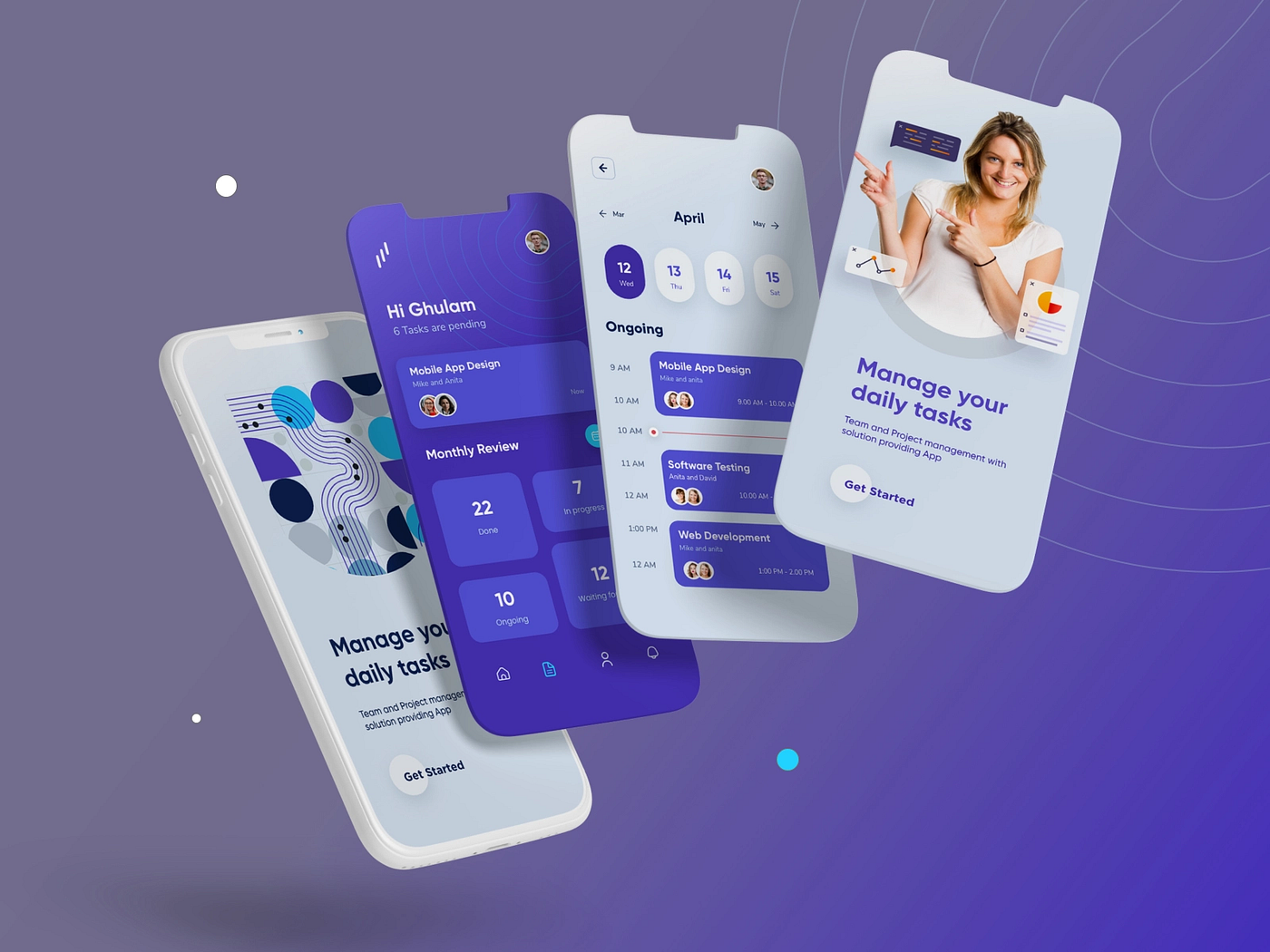10 Mobile App Design Principles That Will Make Your App Stand Out
Discover 10 game-changing mobile app design principles for crafting a unique and captivating user interface. Make your app shine!

Mobile applications have become an indispensable component of our daily life. There's an app for practically anything, whether for social networking, shopping, productivity, or entertainment.
With millions of applications accessible in app stores, organizations must design a mobile app that fulfils its function and stands out in a competitive industry.
To do this, you must follow mobile app design concepts that will make your app sparkle. This blog post will discuss ten mobile app design principles that will help your app leave a lasting impression.
Top 10 Mobile App Design Principles
-
User-Centric Design
The most fundamental aspect of mobile app design is prioritising your consumers' demands and preferences. Understanding their objectives, behaviours, and pain areas is critical in developing an app that answers their issues.
Conducting user research and getting feedback may give significant insights to guide your design choices. By designing for your target audience, you can guarantee that your app meets their unique demands and provides a smooth user experience.
-
Simple and Intuitive Navigation
Users should be able to navigate through your app without difficulty or annoyance. Users can swiftly travel between various app areas if a simple and intuitive navigation mechanism is implemented.
A clean and simple style with clear labels and identifiable symbols can improve your app's usability and give users.
-
Consistent Visual Design
Consistency is essential in app design since it fosters familiarity and assists users in understanding how to engage with your app. Use a consistent colour palette, typography, and UI components to maintain your app's visual style.
Design consistency improves the user experience and promotes your brand identification. A well-designed app with a consistent visual language will make an impact on users and boost engagement.
.
-
Responsive and Adaptive Design
It is critical to build your app with flexibility and responsiveness in mind. Your software should give the best possible user experience regardless of the device. Responsive design guarantees that your app's style and content seamlessly resize to suit multiple screen sizes, while adaptive design enables you to build a customized experience for certain devices.
Using responsive and adaptable design practises, you can appeal to a larger audience and guarantee that your app looks excellent on any device.
-
Visual Hierarchy and Readability
Creating a clear visual hierarchy in your app is critical for directing users' attention and prioritizing vital information. Use varied sizes, colours, and typefaces to distinguish various parts and emphasize crucial characteristics.
By defining a hierarchy, you can guarantee that users can read and comprehend the material inside your app. Also, consider readability by using readable typefaces and suitable font sizes. Clear and legible text will improve the entire user experience and make your app more user-friendly.
-
Engaging and Intuitive Onboarding
The onboarding experience sets the tone for the rest of the user journey. It is critical to generate a good first impression and engage people immediately. An engaging and user-friendly onboarding process may assist consumers in comprehending the value of your software and its essential features.
Employ interactive tutorials, tooltips, or progressive onboarding to assist users through the app's functionality. Keep the onboarding experience brief, focused, and engaging to promote high user retention.
-
Microinteractions and feedback
Microinteractions are discrete movements and visual signals that provide consumers feedback as they use your program. These little particulars increase engagement and improve the user experience as a whole.
Use micro-interactions such as button animations, loading spinners, or error warnings to give consumers real-time feedback. The software seems more responsive and engaging thanks to interactive components that offer users a sense of control.
-
Personalization and Customization
Users like it when an app considers their preferences and requirements. Users will feel more connected to your business and a sense of ownership if your app includes personalization and customization possibilities.
To personalize their app experience, allow users to alter themes, layouts, or alerts. The likelihood of a user using an app repeatedly increases thanks to personalization possibilities.
-
Performance and Speed Optimization
No matter how visually stunning your app is, users will quickly lose interest if it is slow and unresponsive. Performance and speed optimization should be a top priority in app design. Minimize loading times, reduce the app's memory footprint, and optimize image and video assets.
Implement smooth transitions and animations to create a seamless user experience. A fast and responsive app will keep users engaged and ensure that they return to your app repeatedly.
-
Usability Testing and Continuous Improvement
The process of designing an app involves continuous iteration and development. Throughout the design phase, test for usability and collect user input. User testing may be used to find usability problems, pain points, and potential improvement areas.
Use user input to inform your design choices and iterate on your app to improve the user experience continuously. Users can tell you care about meeting their demands and are dedicated to providing a top-notch app experience through your frequent updates and improvements.
Wrapping Up
Developing a mobile app that stands out in the competitive app industry is a difficult undertaking. However, by following these ten mobile app design principles, you may offer your app a competitive advantage. Furthermore, by following these ideas, you may design an app that not only captivates consumers but also leaves a lasting impact.
Consider collaborating with a respected mobile application design company if you want professional advice on how to put these concepts into practise. Your app concept may become a fascinating and prosperous reality with their knowledge and skills.
What's Your Reaction?
























































































